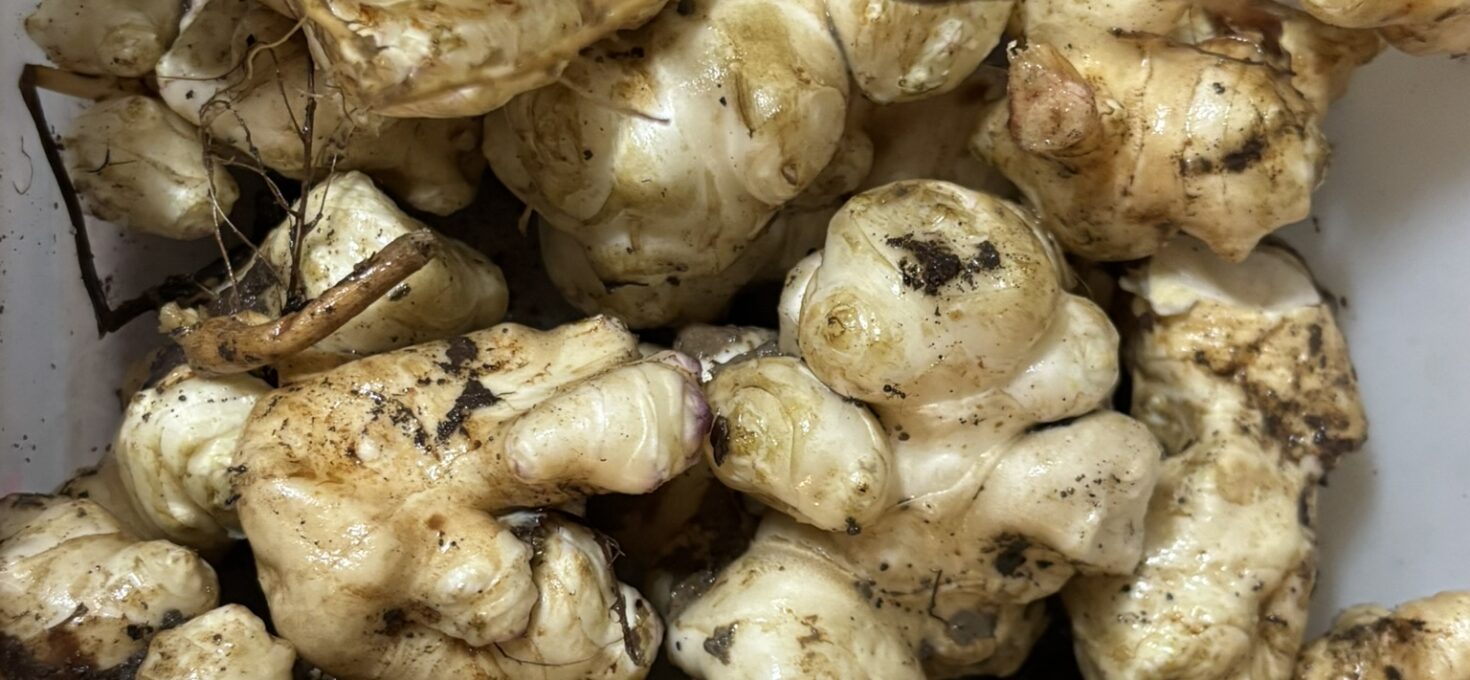This year, we decided to give sunchokes (also known as Jerusalem artichokes) a go again, and what a rewarding experience it turned out to be. Scroll through my experiences, tips and sunchoke photo gallery!
From my experience, sunchokes are a fantastic plant for beginners—they practically grow themselves. They multiply and spread easily without the need for fertilisers, compost, or even extra watering. Once planted, they just get on with it.
Making them a foolproof, low-maintenance way to grow food and help feed your family year after year.
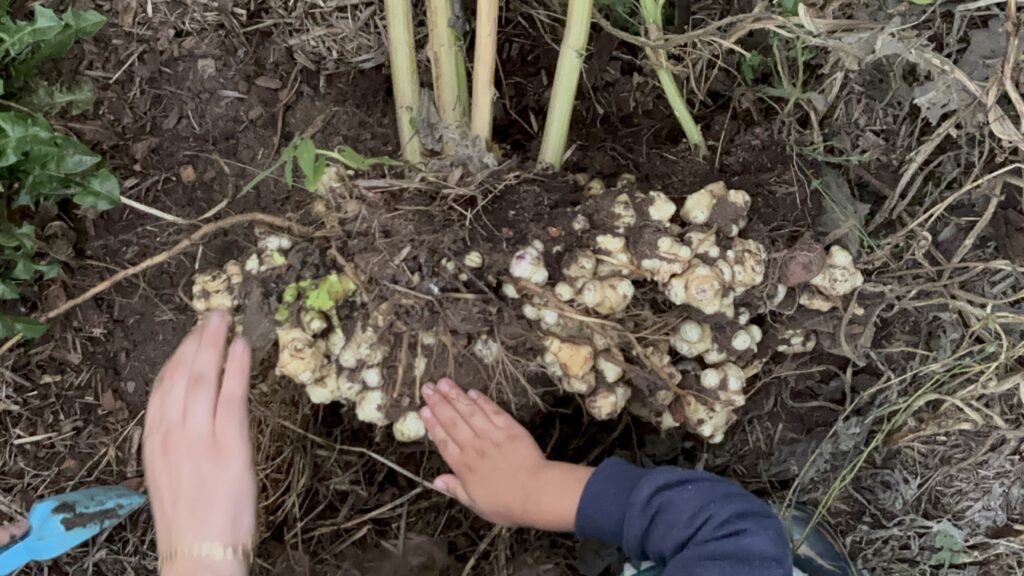
Growing Conditions and Tips
Despite a hot summer and barely any watering, our sunchokes thrived. They were grown in full sun and pretty much left to do their thing. These hardy perennials can handle a bit of neglect and still reward you with a great harvest.
If you’re thinking about growing them, here are some quick tips:
- Plant in late winter/spring.
- Sun: Full sun is best.
- Water: Minimal. Ideal for a low-maintenance gardener.
- Space: Give them plenty — they grow tall and spread underground.
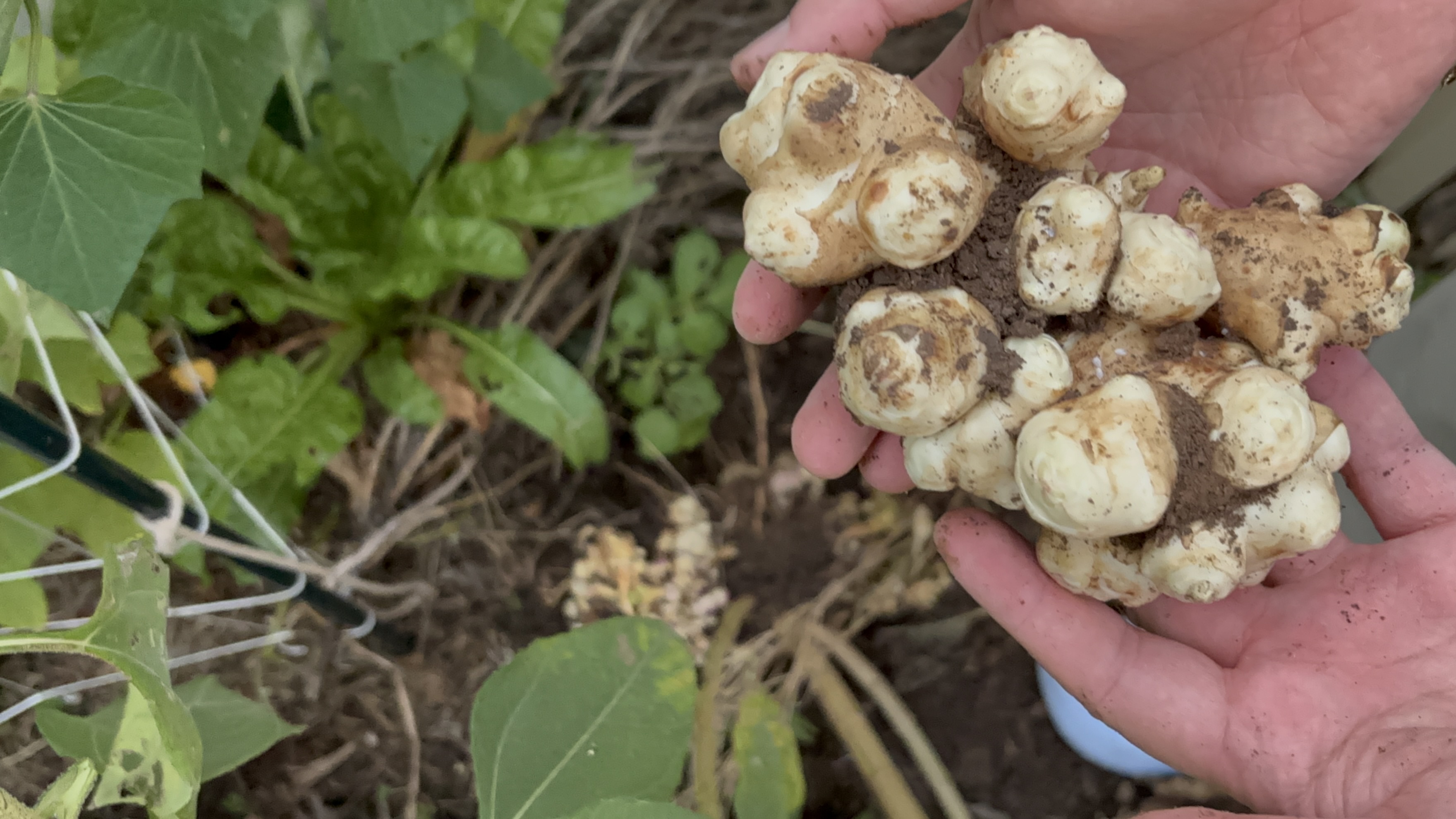
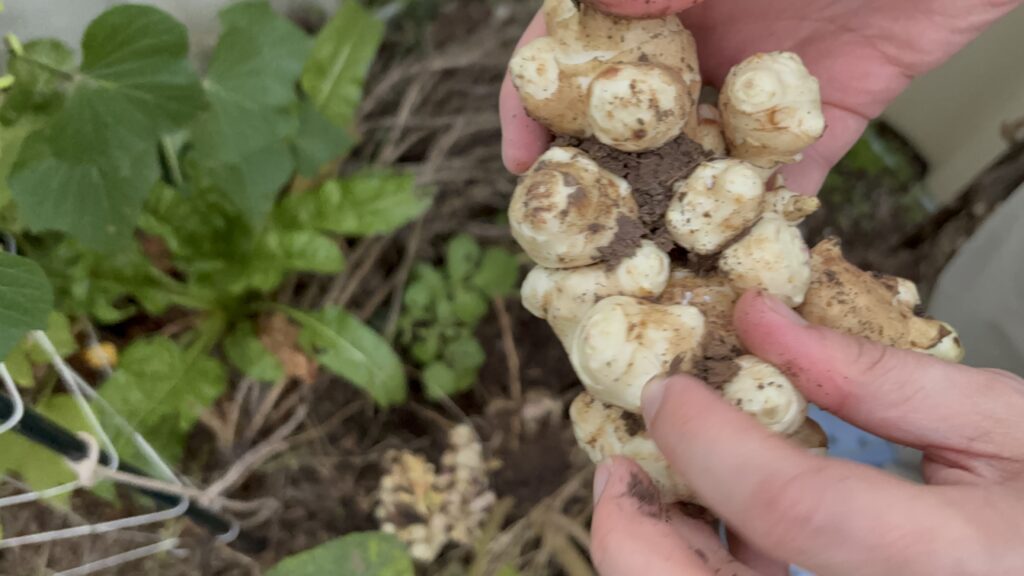
Planting and Watching Them Grow
About seven months ago, in early spring, we planted just a handful of sunchoke tubers. You can find sunchoke tubers in most garden stores around Winter/Spring.
We tucked them into a sunny corner of the garden — a spot I rarely visit because, honestly, I’m usually too lazy to water it. Surprisingly, the lack of maintenance didn’t hold them back at all.
By mid-summer, tall green stalks topped with small sunflower-like blooms towered over the rest of the garden. These bright yellow flowers weren’t just beautiful; they also brought in plenty of bees and butterflies, creating a buzzing little ecosystem and adding some lovely privacy to that side of the yard.


Tall sunchoke stalks beginning to wilt and fall. Surrounded by hollyhocks, snapdragons, pansies and violas.
Harvesting in Autumn
Come April — mid to late autumn here — the flowers and foliage began to die back, signalling it was time to dig. We set aside some time and dug up a surprising haul: two whole grocery bags full of knobbly, golden tubers! We hadn’t expected such a large harvest from such a low-effort crop.
That evening, we roasted some sunchokes alongside some homegrown potatoes and herbs. Their flavour is slightly nutty and sweet, with a creamy texture inside — almost like a cross between a potato and a sunflower seed.
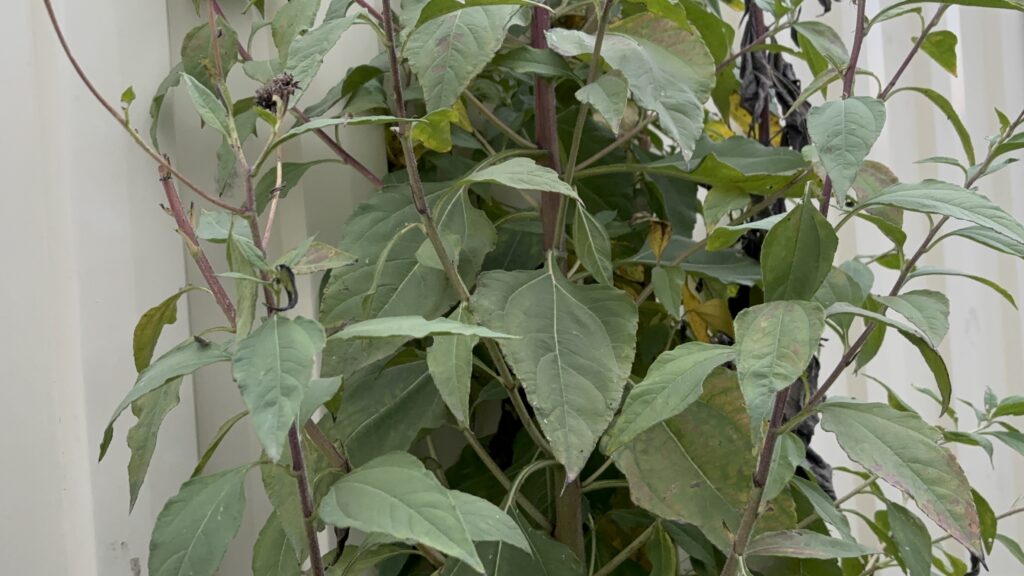
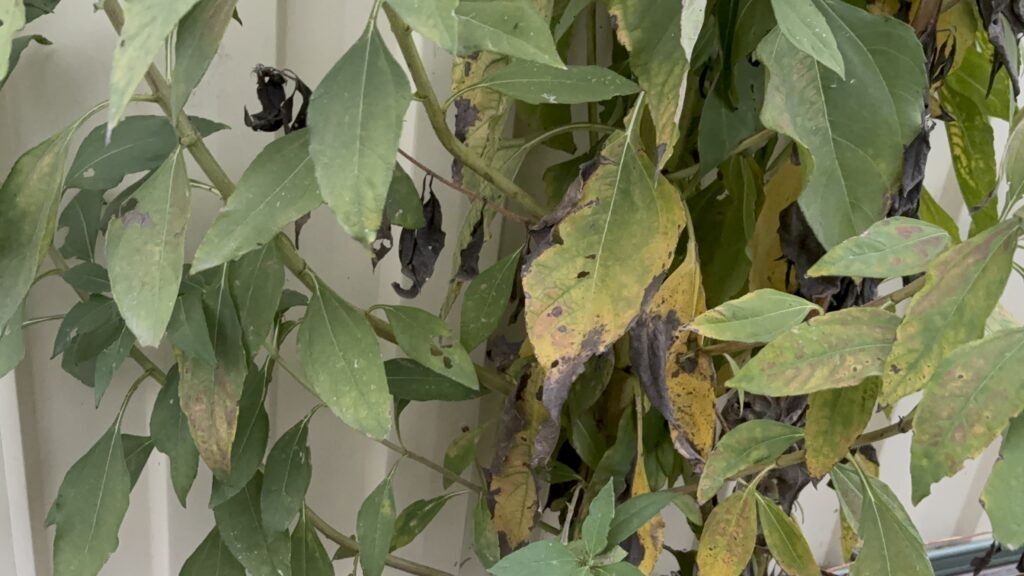
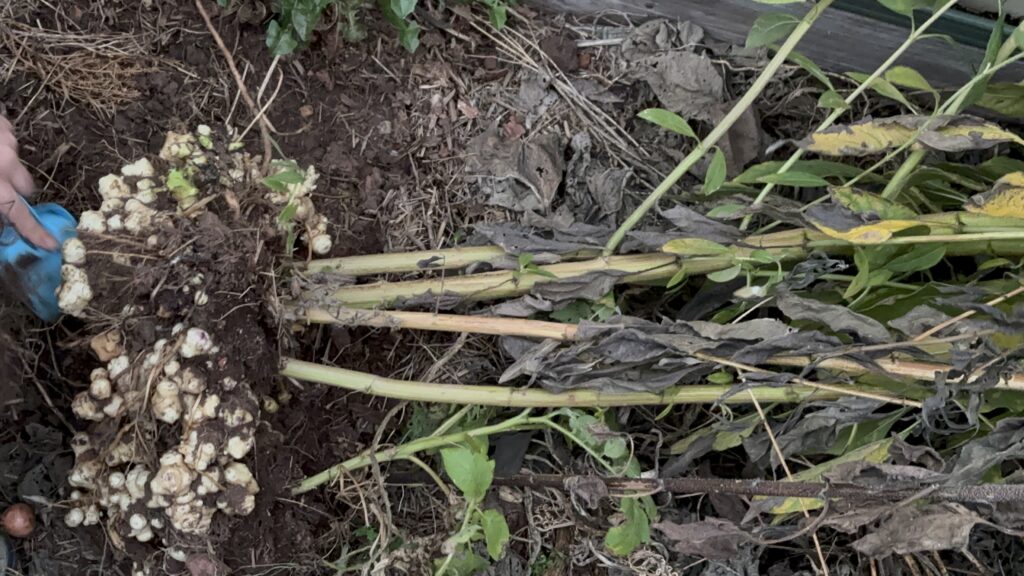
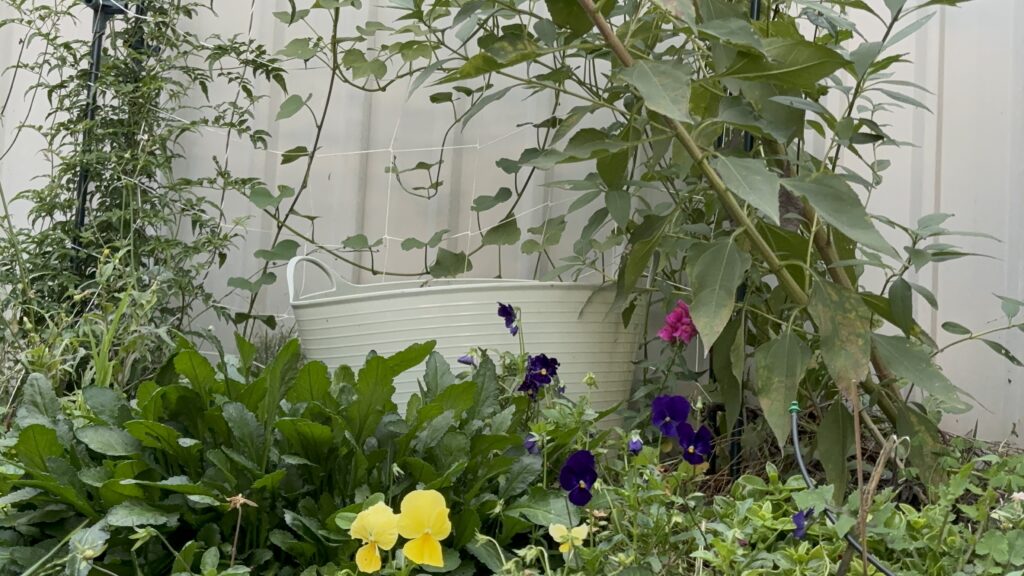
Storage and Use
Fresh sunchokes can be stored in the fridge for 1–3 weeks.
For longer-term storage, you can also freeze them — just scrub/peel, par boil, and freeze in airtight containers or bags. Will keep in freezer for about 6 months.
Some sunchoke cooking ideas I’m looking forward to trying:
- Using in potato salads
- Adding to hashbrowns
- Air/shallow frying
- Making vegetable fries and crisps
- Dips, soups, puree and sauces
We still have plenty more to dig up over the coming weeks, and whatever tubers we miss will grow into new plants next season. I’ll also be tossing the dried-up stems and leaves into the compost bin.
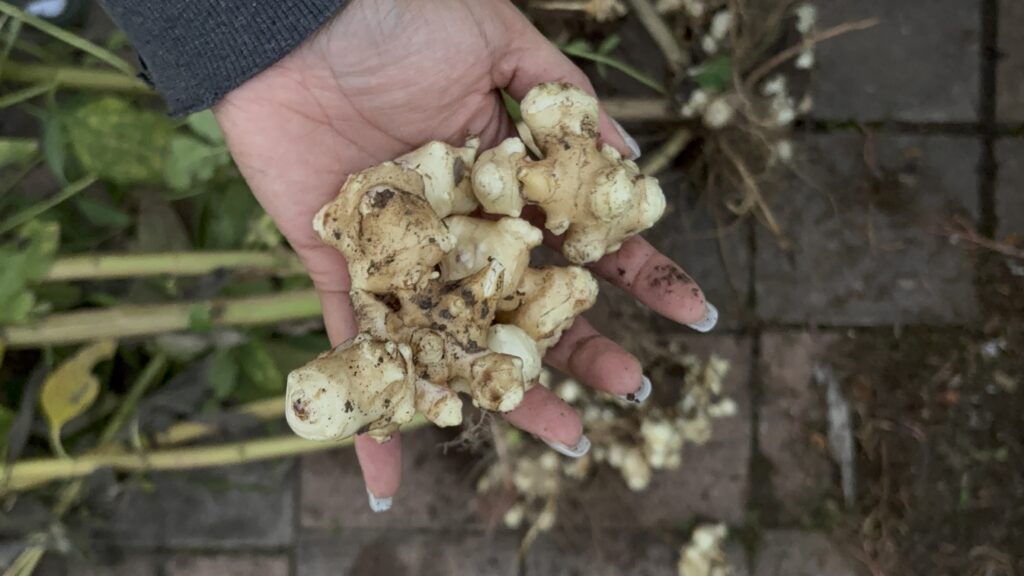

Things I’ll try next time growing:
Next time I grow sunchokes, I’ll take advantage of how easily they come back—any tubers left behind in the soil will sprout into new plants for next autumn. To ensure another generous harvest, I’ll be mindful to dig them up around this time of year.
I don’t plan on giving them any special treatment, as they’ve proven to be a carefree, fast-growing crop that pretty much takes care of itself.
I suggest you give them a try if this appeals to you!
A Word of Caution
Sunchokes are enthusiastic spreaders. If you’re planting them, be careful where you put them — they can take over garden beds if you’re not watching. I purposely planted mine in open areas I don’t mind them spreading into, including a space behind our shed/next to our compost bin.
Similar posts:
Autumn flower updates
Cottage garden must dos for autumn
End of summer Garden recap
Have you grown sunchokes before? Let me know your experience or tips in the comments below!

